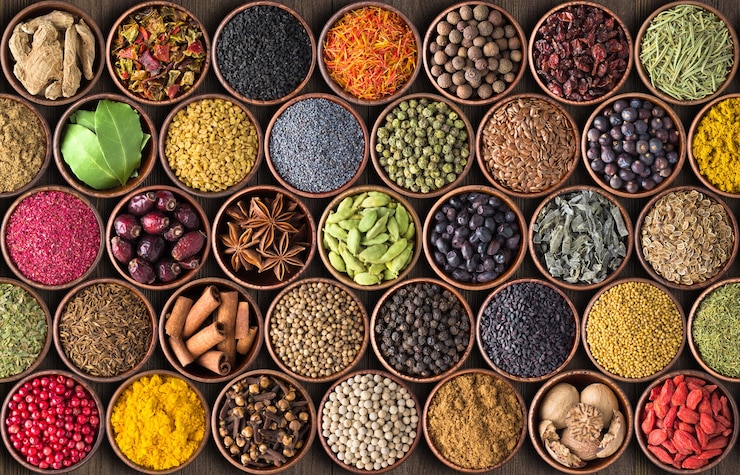Ask Ayurvedic doctor a question and get a consultation online on the problem of your concern in a free or paid mode. More than 2,000 experienced doctors work and wait for your questions on our site and help users to solve their health problems every day.
Shop Now in Our Store
Sadhaka Pitta: Understanding its Role in Mind-Body Balance

Sadhaka Pitta is a fascinating concept within Ayurveda that has captured the interest of both traditional practitioners and modern researchers. Its influence spans emotional regulation, cognitive function, and overall well-being. In this article, we will delve deep into what Sadhaka Pitta is, how it operates according to Ayurvedic theory, and how contemporary science interprets its effects. From peer-reviewed studies to standard clinical guidelines, we will present a balanced, evidence-based overview and practical tips that you can consider in your daily routine. Whether you are a healthcare professional, a student of Ayurveda, or someone seeking holistic approaches to health, read on to discover the science, tradition, and practical applications of Sadhaka Pitta.
Table of Contents
-
Introduction: The Mind-Body Connection
-
What Is Sadhaka Pitta?
-
The Science Behind Sadhaka Pitta
-
Clinical Perspectives and Current Research
-
Lifestyle Factors That Influence Sadhaka Pitta
-
Practical Applications for Balancing Sadhaka Pitta
-
Common FAQs About Sadhaka Pitta
-
Conclusion: Where Tradition Meets Evidence
1. Introduction: The Mind-Body Connection
Imagine waking up feeling mentally foggy and emotionally unsettled. You find it hard to focus at work, and your stress levels spike for no apparent reason. In Ayurvedic philosophy, one possible explanation for these symptoms lies in an imbalance of the subdosha known as Sadhaka Pitta. While Ayurveda originated in India centuries ago, its concepts are gradually gaining scientific recognition. Several studies now explore the complex interactions between emotion regulation, cognitive functions, and biochemical pathways, aligning well with Ayurvedic theories.
According to a meta-analysis published in the Journal of Ayurveda and Integrative Medicine, practices that stabilize Pitta—such as yoga, meditation, and specific dietary regimens—can have a measurable positive effect on stress markers like cortisol levels
2. What Is Sadhaka Pitta?
In Ayurveda, Pitta is one of the three fundamental doshas (energetic principles), responsible for transformation, metabolism, and heat in the body. Pitta itself is divided into five subdoshas, each overseeing specific physiological and psychological functions. Sadhaka Pitta is the subdosha that influences emotional well-being, memory, and intellectual clarity. The term “Sadhaka” stems from the Sanskrit word “sadhana,” signifying achievement or accomplishment, hinting at this subdosha’s role in mental and emotional “digestion,” or how we process and integrate our experiences.
Key Functions of Sadhaka Pitta
-
Emotional Regulation: Governs feelings such as contentment, determination, and enthusiasm.
-
Cognitive Function: Impacts focus, memory retention, and comprehension.
-
Motivation and Goal-Orientation: Fuels drive, ambition, and the capacity to persevere toward aspirations.
Ayurvedic texts such as the Charaka Samhita and the Sushruta Samhita describe Sadhaka Pitta as seated in the heart and brain, symbolizing a connection between mental clarity and emotional balance. While these scriptures use metaphorical language, modern interpretations suggest a link to biochemical processes in the nervous, endocrine, and cardiovascular systems.
3. The Science Behind Sadhaka Pitta
If you are wondering how an ancient concept like Sadhaka Pitta could align with modern science, you are not alone. Researchers are increasingly acknowledging the importance of psycho-neuroendocrine pathways—that is, how our mental state, neural networks, and hormonal secretions affect each other.
The Role of Neurotransmitters
-
Serotonin and Dopamine: Both neurotransmitters regulate mood and motivation. Imbalances in these chemicals can lead to depression, anxiety, or cognitive disturbances.
-
Cortisol: Often dubbed the “stress hormone,” cortisol imbalances are linked to chronic stress, fatigue, and mood swings.
When Sadhaka Pitta is said to be balanced, it could mirror a state where serotonin, dopamine, and cortisol levels are adequately regulated, supporting a stable mood and better focus.
Heart-Brain Axis Research
Emerging studies in psychophysiology highlight the heart’s intrinsic nervous system, sometimes referred to as the “heart-brain axis.” This network of neurons can sense, regulate, and respond to emotions. In Ayurveda, Sadhaka Pitta’s seat in the “heart region” might align with this modern discovery of the heart’s role in emotional and cognitive processes.
Supporting Studies
-
A 2020 review in Frontiers in Physiology noted that the vagus nerve and cardiac autonomic regulation play pivotal roles in stress adaptation and emotional balance
[2] . -
A clinical trial published in the International Journal of Yoga observed that meditative practices improved heart rate variability (HRV), indicating better emotional regulation, echoing the Ayurvedic emphasis on mind-body synchronization.
These parallels suggest that “balancing Sadhaka Pitta” might be a poetic way of describing optimal neuroendocrine and cardiovascular functioning.
4. Clinical Perspectives and Current Research
Ayurvedic Practitioners’ Views
Ayurvedic doctors often focus on holistic treatment. They evaluate digestive health, emotional well-being, and lifestyle patterns. In cases of mental distress, such as depression, insomnia, or anxiety, an imbalance in Sadhaka Pitta is sometimes considered a contributing factor. Therapies might include:
-
Herbal Formulations: Ashwagandha, Brahmi, and Shankhpushpi for calming the mind.
-
Mindful Practices: Yoga, meditation, and Pranayama (breathing exercises).
-
Dietary Adjustments: Cooling foods like cucumber, coconut, and sweet fruits to counter excess Pitta.
Conventional Medical Insights
While conventional medicine does not specifically recognize “Sadhaka Pitta,” it does acknowledge the mind-body link. Psychiatry and psychosomatic medicine explore how psychological stressors affect physiological conditions like hypertension, acid reflux, and immune response.
-
Cognitive Behavioral Therapy (CBT): This form of therapy mirrors the Ayurvedic principle of addressing thought patterns and emotional responses as a unified whole.
-
Nutritional Psychiatry: Emerging evidence suggests that anti-inflammatory diets and adequate micronutrient intake can stabilize mood and cognitive function.
Bridging the Gap
Collaborations between Ayurvedic and Western healthcare practitioners are increasing, aiming to integrate dietary, psychological, and lifestyle interventions for comprehensive patient care. A 2019 randomized controlled trial in the journal Evidence-Based Complementary and Alternative Medicine found that including Ayurvedic dietary guidelines and herbs improved emotional well-being scores in patients with mild anxiety
5. Lifestyle Factors That Influence Sadhaka Pitta
Balancing Sadhaka Pitta is not solely about taking supplements or herbs; it encompasses a broad range of lifestyle choices that directly impact mental and emotional health. Below are some critical factors:
-
Diet
-
Cooling Foods: Include leafy greens, cucumbers, coconut water, and coriander.
-
Avoid Overly Spicy or Sour Food: These may exacerbate Pitta-related issues such as irritability and acid reflux.
-
-
Sleep
-
Regular Sleep Schedule: Going to bed and waking up at the same time each day can stabilize circadian rhythms.
-
Quality Matters: Studies link poor sleep to elevated cortisol levels and impaired emotional regulation.
-
-
Stress Management
-
Mind-Body Techniques: Yoga and meditation have shown efficacy in reducing stress hormones.
-
Cognitive Strategies: Journaling and cognitive reframing can help manage negative thought patterns.
-
-
Physical Activity
-
Moderate Exercise: Activities like brisk walking, swimming, or light aerobics can keep the body active without overheating.
-
Overtraining Risks: Excessively intense workouts can spike cortisol, potentially throwing Sadhaka Pitta off balance.
-
-
Social Connections
-
Support Systems: Healthy relationships and social networks are correlated with better emotional well-being.
-
Community Activities: Engaging in group exercise classes or community events can offer both emotional support and motivation.
-
6. Practical Applications for Balancing Sadhaka Pitta
Step-by-Step Daily Routine
-
Morning Hydration: Begin your day with warm water infused with mint or basil to gently cleanse.
-
Mindful Movement: Practice 15–20 minutes of yoga or stretches focusing on deep, steady breathing.
-
Breakfast: Opt for easily digestible foods like oatmeal with cooling spices (cardamom, fennel).
-
Midday Break: Take a short walk post-lunch and breathe deeply to aid digestion and relaxation.
-
Evening Wind-Down: Incorporate calming activities such as journaling or reading.
-
Bedtime: Aim for a consistent bedtime, ideally before 10 PM, to promote restorative sleep.
Herbs and Supplements (With Caution)
-
Brahmi (Bacopa monnieri): Traditionally used to enhance cognitive function and reduce anxiety.
-
Ashwagandha (Withania somnifera): May help reduce cortisol levels, supporting emotional balance.
-
Jatamansi (Nardostachys jatamansi): Often prescribed for its calming effects.
Disclaimer: Consult a qualified Ayurvedic practitioner or medical doctor before starting any herbal supplement, especially if you have pre-existing conditions or are taking prescription medications.
7. Common FAQs About Sadhaka Pitta
Q1: Is Sadhaka Pitta the same as serotonin or dopamine?
A: Not exactly. Sadhaka Pitta is an Ayurvedic concept describing mind-body regulation. Serotonin and dopamine are neurotransmitters. While imbalances in these neurotransmitters might reflect a disturbed Sadhaka Pitta, Ayurveda encompasses more holistic aspects like lifestyle and spiritual well-being.
Q2: Can a Pitta-pacifying diet fix emotional issues?
A: Diet is only one part of the puzzle. Emotional health also requires adequate rest, stress management, and sometimes professional medical intervention. A balanced diet can certainly help, but it’s not a stand-alone cure.
Q3: Is there scientific evidence supporting Sadhaka Pitta therapies?
A: While modern research does not directly study “Sadhaka Pitta,” many of its recommended practices—such as meditation, yoga, and mindful eating—are well-researched for benefits on stress, mood, and cardiovascular health.
Q4: How long does it take to balance Sadhaka Pitta?
A: The timeline varies from person to person, depending on factors like genetics, lifestyle, and the severity of imbalance. Some people notice improvements in a few weeks, while others may need months or more structured interventions.
Q5: Are there any side effects to Ayurvedic treatments for Sadhaka Pitta?
A: When used responsibly under professional guidance, Ayurvedic therapies are generally safe. However, self-prescribing potent herbs or ignoring potential drug-herb interactions can lead to adverse effects.
8. Conclusion: Where Tradition Meets Evidence
The journey to understand Sadhaka Pitta brings together the rich tapestry of Ayurvedic philosophy and cutting-edge research in psycho-neuroendocrine science. Far from being merely historical artifacts, these Ayurvedic concepts resonate with modern discoveries about how our minds, hormones, and organs interact in a continuous feedback loop.
Healthcare practitioners—both Ayurvedic and conventional—are increasingly recognizing the value of an integrative approach that addresses mental, physical, and emotional health simultaneously. Whether through dietary changes, mindfulness practices, or carefully selected herbal supplements, balancing Sadhaka Pitta can offer a blueprint for enhanced cognitive clarity, emotional equilibrium, and overall vitality.
If you found these insights valuable, share this article with others who might benefit. If you have specific questions or need personalized medical advice, our qualified Ayurvedic doctors are here to help—ask your question for free at Ask-Ayurveda.com. Your journey toward mental and emotional wellness can be further enriched by exploring all the resources available at the intersection of Ayurvedic tradition and modern medical science.
References
-
Meta-analysis on stress markers and Pitta balancing modalities -
Review on the vagus nerve and cardiac autonomic regulation in emotional balance -
Randomized controlled trial in Evidence-Based Complementary and Alternative Medicine
Medical Disclaimer: This article provides information for educational purposes only. It is not a substitute for professional medical advice, diagnosis, or treatment. Always consult a qualified healthcare provider regarding any medical concerns or conditions.
This article is checked by the current qualified Dr Sujal Patil and can be considered a reliable source of information for users of the site.



